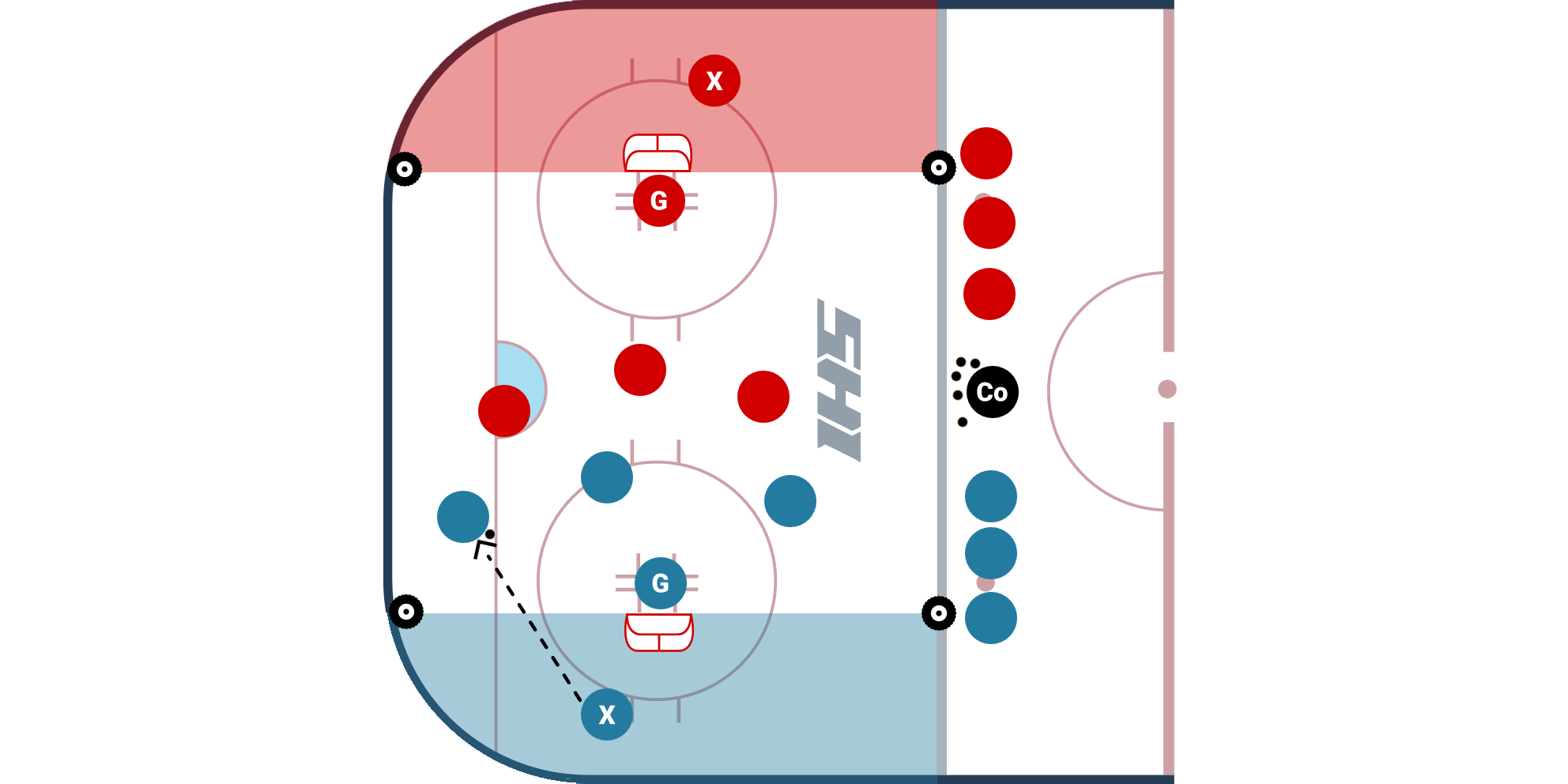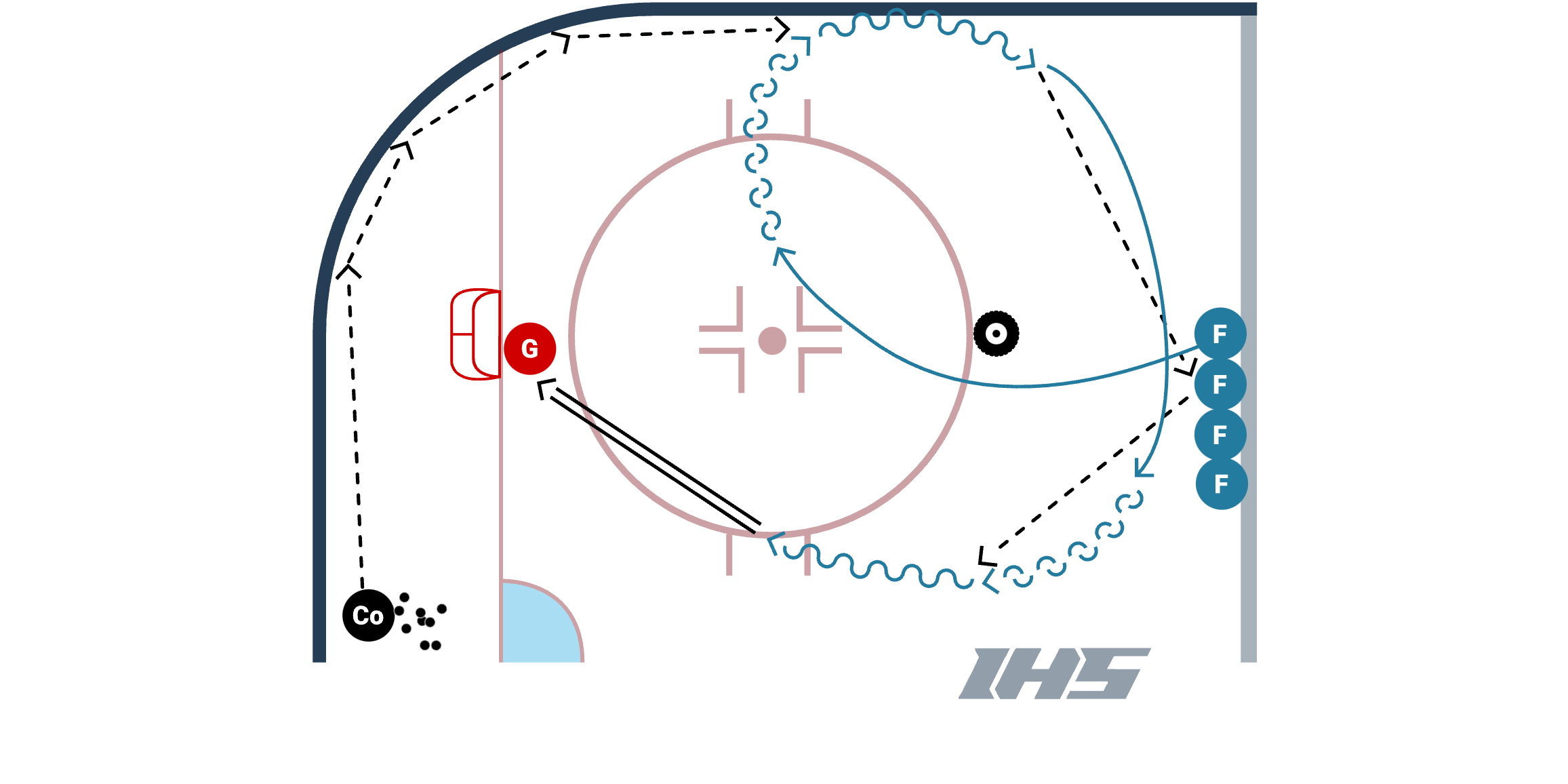
Breakout Stations

Practice Notes
Drills
Bourque 3 on 3 Game
D to D Reverse With Shot
Mid Pair Wall Retrievals
Breakout Regroup Shooting
Wall Retrieval Station
The Breakout Game
Breakout Tips for Centers
Breakout Tips (Strong Side Wingers)
Breakout Tips (Off-Hand Wingers)
Please Note: The Practice of the Week is designed to bring value across multiple age levels. You can use this to build ideas to develop your own practice. With that being said, we highly encourage you to adjust the drills based on your team's age and skill levels. IHS should always be used as a starting point and you can add/remove constraints to fit your team.
Please Note: The Practice of the Week is usually designed to be utilized across multiple age levels. With that being said, we highly encourage you to adjust the drills based on your team's age and skill levels. These drills and practices can be modified to become more basic or more advanced.
Practice Theme: The drills and games in this practice are designed to help your players work on breakout principles and habits.
Focus Points
Below are the main focus points for each position that we want to work on for this practice
Defensive Retrievals
- Scan the ice - you need to make it a habit to shoulder check to be aware of your surroundings when retrieving pucks
- Retrieve at an angle - if time permits, work on retrieving the puck at an angle so that you can accelerate off the wall or out of the corner to create time and space to make a play instead of just wrapping the puck around the wall
- Support your partner - be in a position to support your partner by providing an easy bump/reverse or outlet
Also encourage your defensemen to not just wrap the puck around the boards. Make a tape to tape pass and work to get up ice to join the rush.
Wingers
- Scan the ice - before the puck arrives, look up ice to see what the defensemen is doing to read the pressure
- Get to the wall - before the puck gets to your spot
- Get off the wall - get separation from the wall once you control the puck so you have more options for a clean exit
Centers
- Stay low and slow - you need to provide an outlet for your defense and wingers. It's important to time your route so that you make for an easy outlet
- Look up ice - this will help you read the pressure and give a passing target for your winger either directly or by skating up ice for an easy chip
- Communication - your defense and wingers can be under a lot of pressure when trying to breakout - communicate when you are open to help relieve that pressure
Practice Diagram

Drills
Systems
Coaching Clips
Pesce Shoulder Checks as He Retrieves the Puck in the Defensive Zone
Shoulder checking is one of the best habit for young players to get into when retrieving pucks in their own end. This clip of Brett Pesce is a great demonstration.
What to Watch
- Brett Pesce On Breakout Retrieval Under Heavy Forechecking Pressure From The NYR
- As He Sprints Back To The Puck He Executes Two Shoulder Checks, One Towards The Middle & One Towards The Wall In Order To Read His Support & The Incoming Pressure
- By Doing So Pesce Is Able To Use The Wall On The Strong Side Of The Ice To By Pass Two Forecheckers Leading To The Following Stretch Pass & Breakaway Goal
Kuznetsov C Underneath Puck Breakout Support
Timing is so critical for centers on breakout support. This is a great clip to show your players on how Kuznetsov times his route and provides great support for his winger.
What to Watch
- Puck Rimmed Around To Half Wall On Breakout
- W With Good Scan To Reading Pressure From Pinching Opposition D
- WSH92 As C Takes A Great Low Support Route & Is Available Under The Puck For Short Bump Which Leads To Successful Breakout
Strong Side Reverse by Hurricanes
A simple reverse as shown here by the Hurricanes is such a simple way to break the puck out against an aggressive forechecker. In a reverse you want to use the aggressiveness against the opponent and suck them in, then play the puck back in the direction the pressure is coming from.
What to Watch
- The puck carrier allows the Panther's forechecker to pressure them as much as possible
- The supporting player positions themselves behind the forechecker
- The puck carrier makes the reverse pass off the wall at an angle, making it easier for his teammate to retrieve the puck
- After making the pass the player continues to move to get open for a return pass
- When the supporting player retrieves the puck they get their toes and eyes up ice as soon as possible





